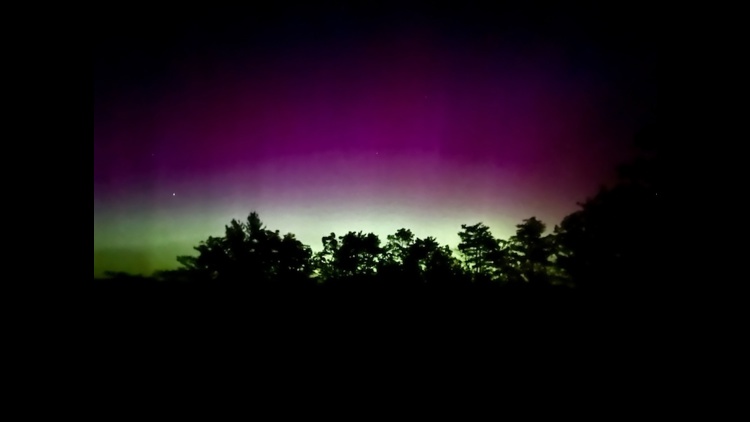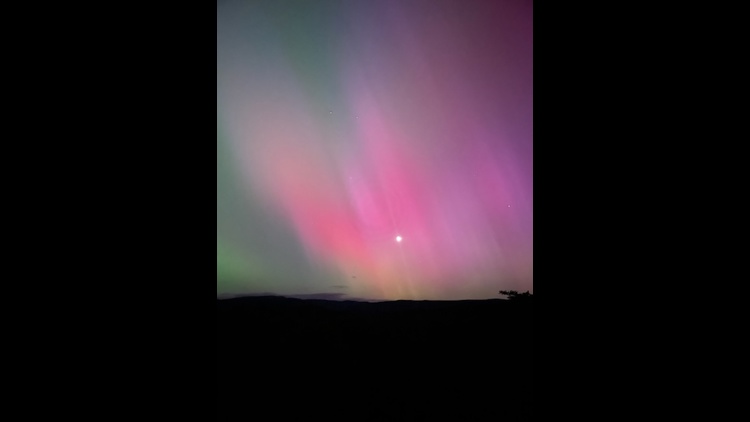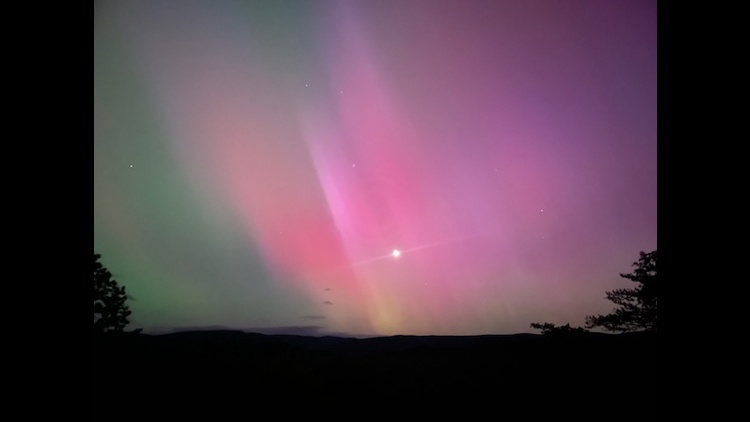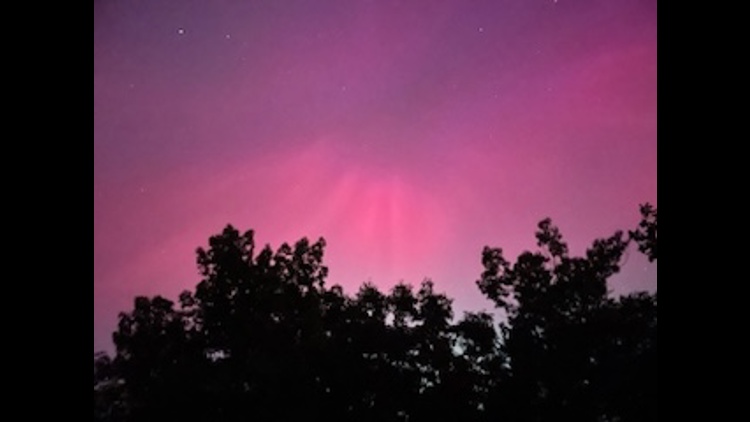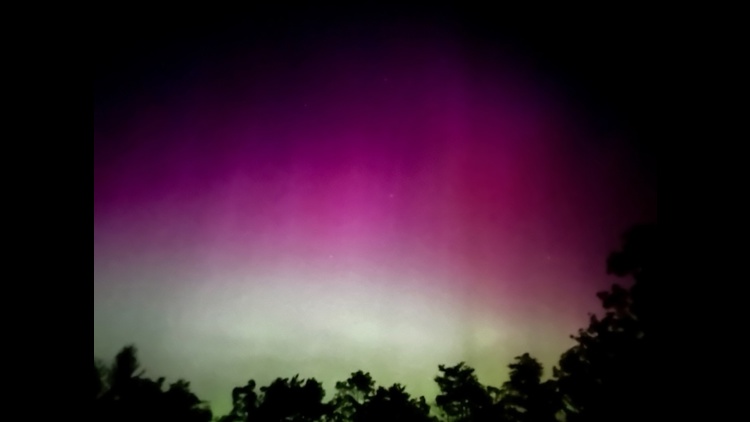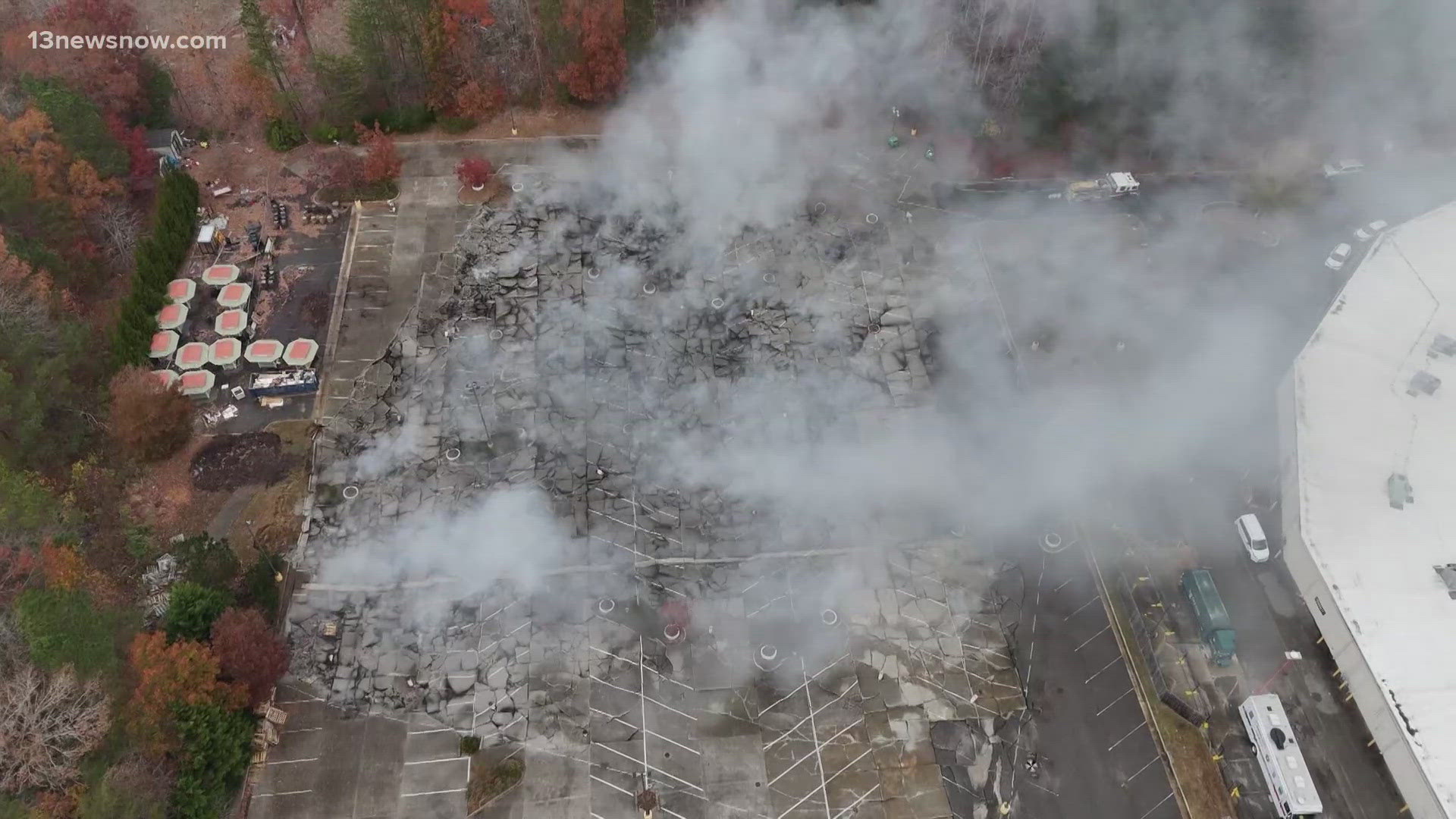NORFOLK, Va. — For the first time since 2003, a G5 geomagnetic storm hit Earth, bringing an array of colors to the sky visible in much of the northern U.S. — including parts of Virginia.
The National Oceanic and Atmospheric Administration (NOAA) reported the Northern Lights seen Friday night into Saturday were considered "extreme," measuring as a G5 — the strongest possible on the geomagnetic storm scale.
G5 storms can interfere with communication and power systems, causing widespread blackouts at times and damage to transformers. Fortunately, as of Saturday, the NOAA said there were some reports of disruptions but no major impacts.
The Aurora Borealis is expected again Sunday night into Monday, with the NOAA Space Weather Prediction Center (SWPC) saying it could range from severe to extreme levels later in the day.
The NOAA issued a rare geomagnetic storm watch from Friday through the weekend. The NOAA on Saturday said G3 to G4 conditions continued through most of the day, with a G4 or Greater Watch still in effect for Sunday and G3 conditions possible into Monday.
The NOAA said the sun produced strong solar flares beginning Wednesday, resulting in five outbursts of plasma capable of disrupting satellites in orbit and power grids here on Earth. Each eruption — known as a coronal mass ejection (CME) — can contain billions of tons of solar plasma.
Chances of seeing the unusual event are heavily dependent on weather — which likely hampered visibility across Hampton Roads on Friday and Saturday nights. Despite earlier predictions of Hampton Roads having "a fairly good shot" at seeing the Northern Lights, there was little visibility in the region — likely due to clouds.
In an interview with 13News Now on Friday, NOAA's SWPC Operations Chief Mike Bettwy said there was roughly a 40-50% chance of visibility "given our latitude and what's happening right now [on the sun's surface] and the potential for it to get worse."
If you captured the light show share your photos with 13News Now by texting 757.628.6200.






